Tag Archives:from the library

22
AugThe Long and the Short of It
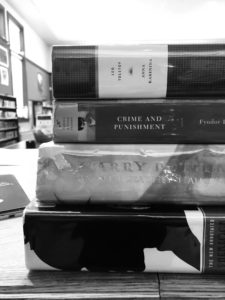 When I first started my career as a librarian, I secretly judged people who asked me about the number of pages in a book before they were even curious about its plot. I used my “concern” about dwindling reading habits of America’s youth as a thin disguise for my own smug attitude concerning my love for long, meandering novels. At one time, I could read three or four books simultaneously and couldn’t understand why the length of a book mattered. If a book is interesting and well-written, why would anyone care about the length? I couldn’t fathom a different answer than my own.
When I first started my career as a librarian, I secretly judged people who asked me about the number of pages in a book before they were even curious about its plot. I used my “concern” about dwindling reading habits of America’s youth as a thin disguise for my own smug attitude concerning my love for long, meandering novels. At one time, I could read three or four books simultaneously and couldn’t understand why the length of a book mattered. If a book is interesting and well-written, why would anyone care about the length? I couldn’t fathom a different answer than my own.
No matter how well-concealed, this is not a good attitude for anyone in a position to recommend books, especially to kids. Age and experience have thankfully intervened to eliminate the uninformed judgements of my youth. The past fourteen years as a youth services professional in a public library has taught me all the reasons book length is such an important factor for many readers. Kids definitely judge books by their covers, and by extension, they factor in how difficult a book might be simply by looking at it. While many kids do love massive tomes like J. K. Rowling’s Harry Potter series or Rick Riordan’s Percy Jackson novels, some see a large book and immediately worry they can’t finish it.
Large books can be intimidating to kids struggling with reading comprehension or attention span challenges. Sometimes even strong readers quail at huge novels when they know a school assignment is due in less than a month. In addition, many kids (and adults) prefer a plot that moves along at a brisk pace. Longer books can often involve many characters or subplots that bog a reader down in more detail than he or she enjoys.
Finally, motherhood has humbled me. For the first three or four years of my daughter’s life, I was so tired that I could only finish a few pages before drifting off. Frequently, I was rudely awoken by my own book hitting me in the face. And forget reading multiple books at once. As with all things pre-child, that life was over. One quick solution that kept me reading (and awake) involved turning to short stories for some relief. Short stories offer the feeling of success during dark reading times. Readers can easily finish a story or two in a few minutes and don’t feel compelled to read the whole book cover to cover. Fortune Smiles by Adam Johnson satisfied my craving for character-driven stories without the slow plot that usually accompanies them. I also always enjoy short story offerings from Flannery O’Connor, especially A Good Man is Hard to Find.
Many mothers know the reality of “mom brain,” that foggy feeling and memory shortage that seems to go hand in hand with raising little kids. During that time, I would look at long novels with their cast of characters and realize that I would never be able to keep all the names or plot twists straight. I loved long series but frequently forgot what happened from one installment to the next. Sometimes I even forgot what happened in the beginning of the book by the time I reached the end. I shelved my intricate fantasy novels and moved on to shorter, more humorous reads like A Man Called Ove by Fredrik Bachman. This story of a grumpy old man who meets his match in his new neighbors kept me laughing and turning the pages.
Now that my daughter is school-aged and a beginning reader herself, I truly understand how busy lives constrain reading time for most families. There are only so many hours in the day and parents and kids are both exhausted at the end of them. Happily, I can report that most parents are doing the right thing and insisting on reading at least twenty minutes a day. But I also can now appreciate the grateful looks overwhelmed parents have given me when I help their child find an appropriate book that’s not “too long.”
On a personal level, I’ve found a new way to reconnect with my love for drawn-out, character driven novels by incorporating audiobooks into my daily life. While I don’t have a long commute, I seem to spend a lot of time in my car, to-ing and fro-ing from errands to pick-ups and drop-offs. Even in short bursts, I listen to thirty to forty-five minutes of a book per day. In addition, I also try to make the tedium of chores more bearable by listening to a book as I bustle around the house, folding laundry, emptying the dishwasher, picking up toys or making the beds. Recently, Pachinko, an epic tale following four generations of Japanese-born Koreans, powered me through spring cleaning.
Most audiobook devotees will tell you the narrator plays a key role in the success of an audiobook. A reader can make or break your interest in continuing to listen to a story. If the audiobook reader has great inflection and creates different but believable voices for each character, I’m hooked. If the narrator as an irritating voice or mispronounces words, I know I’ll never commit to listening to the story. Currently, the talented actress Liyah Summers is narrating The Priory of the Orange Tree, an intricately detailed British fantasy that rivals Game of Thrones for its unexpected twists and turns.
If you are looking for ways to incorporate more reading into a busy life, check out the library’s Overdrive and Hoopla services. Each of these services provide access to free e-books and digital audiobooks through easy to download apps for your mobile device. All you need is Norwood library card to gain access to these amazing digital resources.
All of this has made me a better librarian. I can’t truly help people if I judge them or their requests. I don’t think twice now if a child asks me how long each summer reading book is before making their selection. I understand the practical concerns and, frankly, differing preferences most people have. If a child or adult tells me they like a book that “moves along” or is “exciting,” I know to dispense with involved plots and lengthy descriptive prose in favor of well-written, shorter books with more appeal and a faster pace. I’m here to help kids and adults create their own positive reading experiences so they can develop a lifelong love affair with books.
Kate Tigue is the Head of Youth Services at the Morrill Memorial Library in Norwood, MA. Look for her article in the August 22, 2019 issue of the Transcript and Bulletin.
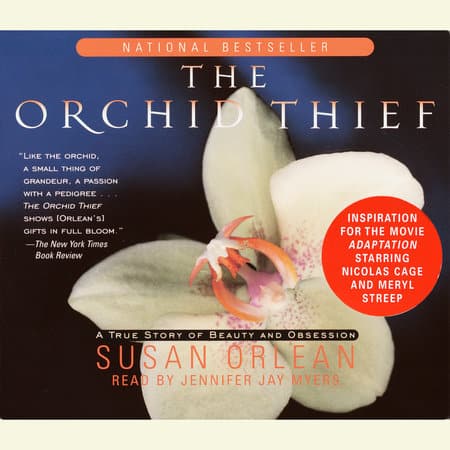
15
AugThe Ghost Orchid: Mystery of the Swamp
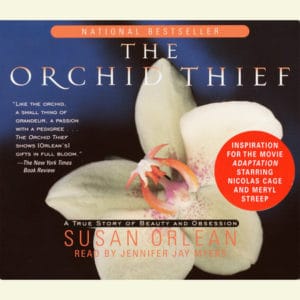 Seeing the ghost orchid was not on the Charlotte Canelli bucket list. I actually don’t have an official bucket list, although I’ve been known to mentally check things off a list-of-sorts. I am hard-pressed to adopt any I-must-do-this-before-I-die obsessions. Spending a night in a Russian monastery was a happy consequence of a purposeful trip to the Soviet Union. Sipping mead in an Irish castle, viewing fields of Texas bluebonnets in the spring, and observing a Santeria ceremony in Cuba were the rewards of other whimsical adventures. My life has been a chaotic mixture of loss, love, joy, and pain, and I’ve happened upon many serendipitous experiences along the way.
Seeing the ghost orchid was not on the Charlotte Canelli bucket list. I actually don’t have an official bucket list, although I’ve been known to mentally check things off a list-of-sorts. I am hard-pressed to adopt any I-must-do-this-before-I-die obsessions. Spending a night in a Russian monastery was a happy consequence of a purposeful trip to the Soviet Union. Sipping mead in an Irish castle, viewing fields of Texas bluebonnets in the spring, and observing a Santeria ceremony in Cuba were the rewards of other whimsical adventures. My life has been a chaotic mixture of loss, love, joy, and pain, and I’ve happened upon many serendipitous experiences along the way.
How I came to trod over a mile into southwestern Florida’s Corkscrew Swamp to view the elusive super-ghost orchid is no mystery to me. I simply awoke one sunny and hot July morning in Fort Myers, Florida, and placed it on top of my must-do-today list.
The ghost orchid (or Dendrophylax lindenii in horticultural parlance) is one of the rarest flowers in the world. It is an epiphyte – a plant that grows on air. The ghost orchid and other epiphytes are not parasites, but like bromeliads, mosses, etc., they derive their nutrients from the water, air, and the detritus of their host plants. Ghost orchids are native to the Everglades of Florida and Cuba, in the moist and warm environments that make their lives possible.
The ghost orchid flowers in an 85-day blooming phase, mainly between June and August. The ghost orchid got its name because it is a master at camouflage – it is challenging to make out from its background – the trunk of a tree. Its thin, pale-white petals and curling tendrils form what looks like the hind legs of a frog, and it is also called the white frog orchid.
When Charles Darwin became fascinated by orchids later in his life, he suggested that a particular pollinator would be found for each specific orchid. In Chasing Ghosts in the Everglades (Forbes Magazine, July 19, 2019), the story is told of a team of three photographers who braved Florida swamps filled with alligators, panthers, snakes and bears. Armed with high-powered cameras, they were on a mission to photograph, at last, the ghost orchid’s mysterious pollinator. A beautiful fifteen-minute bioGraphic film can be viewed embedded in the Forbes article, or directly on YouTube.
What this intrepid threesome of researching photographers (Peter Houlihan, Max Stone, and Carlton Ward, Jr.) found just this summer is astounding. Just as Darwin had predicted, a specific moth, the fig sphinx moth, is the fantastic insect with a proboscis long enough to pollinate the ghost orchid. Its proboscis is also short enough so that the moth withdraws with pollen on its face.
Audubon’s Corkscrew Swamp Sanctuary lies just east of Naples and south of Fort Myers, Florida. It is found off the roads east of the high-rise condominiums and beaches of the Gulf, north of the Everglades, and just west of orange groves and sugar cane fields. The 13,000 acres of Corkscrew Swamp, a beautiful preserve of inland watershed and Bald cypress forest that was saved by the efforts of ecologists, primarily the National Audubon Society, in the mid-1900s. Corkscrew Swamp (named for the winding Corkscrew River) is home to wide varieties of wildlife and flora. Its most-famous flower is the super-ghost orchid found about one mile into the swamp. A ghost orchid with a plethora of blooms is called a super ghost. While it usually blooms in the summer months, it has been seen blooming as early as March and as late as December.
On the Saturday of my ghost orchid hunt, the temperature between 8 and 10 am rose from a bearable 75 degrees to the muggy mid-80s. Steam rose from the slick puddles on the wooden boardwalk; it rains nearly every summer evening in southwest Florida. My friend and I, warned about the mosquitoes and bugs of the swamp at dawn and dusk, were outfitted in long-sleeved shirts and long cotton pants. We packed socks, hats, and Off spray, planning to grab them all at the first sign of pesky bugs. Our overkill clothing and my poor choice of footwear (sandals) became apparent when I slipped and slid along the slimy boards. Happily, no mosquitoes could be found, but I began to doubt my passion for the ghost orchid. Yet, we braved deep into the swamp.
We were warned in the visitors’ center that the camera scope, trained on the ghost orchid and live on the website, was not operating that morning. Neither was the cash register so that we could rent a pair of binoculars. A lightning strike the night before wiped out the visitors’ center Internet and any capabilities to record the flower. One mile in, we arrived at the famous plant. We were surprised and disappointed to see that the orchid was hanging high up in a tree, and yards away from the boardwalk. Several obsessive naturalists (armed with high-powered cameras and binoculars) were not only aloof, but they were stingy, keeping their equipment to themselves.
Steadfast and hopeful, I trained my iPhone camera on a white mass against the dark Bald cypress and snapped a photo. Hot, sweaty and getting cranky, we turned around and tromped the mile back to the center, the rental car, air conditioning, and our picnic breakfast.
My coveted photo of the ghost orchid is blurry and vague. It is undoubtedly the ghost, but the arching tendrils and pale-white beauty are better seen in photographs available everywhere but in my camera.
In January 1995, an article by writer Susan Orlean was published in The New Yorker magazine. Orchid Fever chronicling the life and antics of orchid-hunter, John Laroche. In her follow-up book, The Orchid Thief: a True Story of Beauty and Obsession (1998), Orlean expands the story of Laroche. At worst, he is a scallywag thief. At best, he is a self-taught horticulturalist. More importantly, though, Orlean’s book is a thorough investigation of the history and business of orchids.
It should be noted that Adaptation is the film starring Nicholas Cage and Meryl Streep that is loosely based on Susan Orlean’s book. It was released in 2002 and is a fanciful and surreal take on the Orlean’s story. In this case, the book is far better than the film. Another book, published in 2004, and titled Orchid Fever by Richard Hansen, similarly chronicles the obsession with orchids. Many reviews suggest reading Orlean’s book instead.
I will never forget my own encounter with the ghost orchid – a momentary fascination that brought me into the swamp one hot morning this past July. Audubon’s Corkscrew Swamp is pure delight. The boardwalk is the longest in the world at two and one-quarter miles long. The Bald cypress forest is hundreds of years old. The pristine wilderness is serene, yet full of life. Birds like the diving Anhinga and Black-bellied Whistling Duck live in an environment rich in prey. Alligators play hide-and-seek under the waters of the swamp and bromeliads, and a surplus of mosses hang from the trees. More adventures await me in Corkscrew Swamp.
Charlotte Canelli is the Director of the Morrill Memorial Library in Norwood, MA. Look for her article in the August 15, 2019 issue of the Transcript and Bulletin.
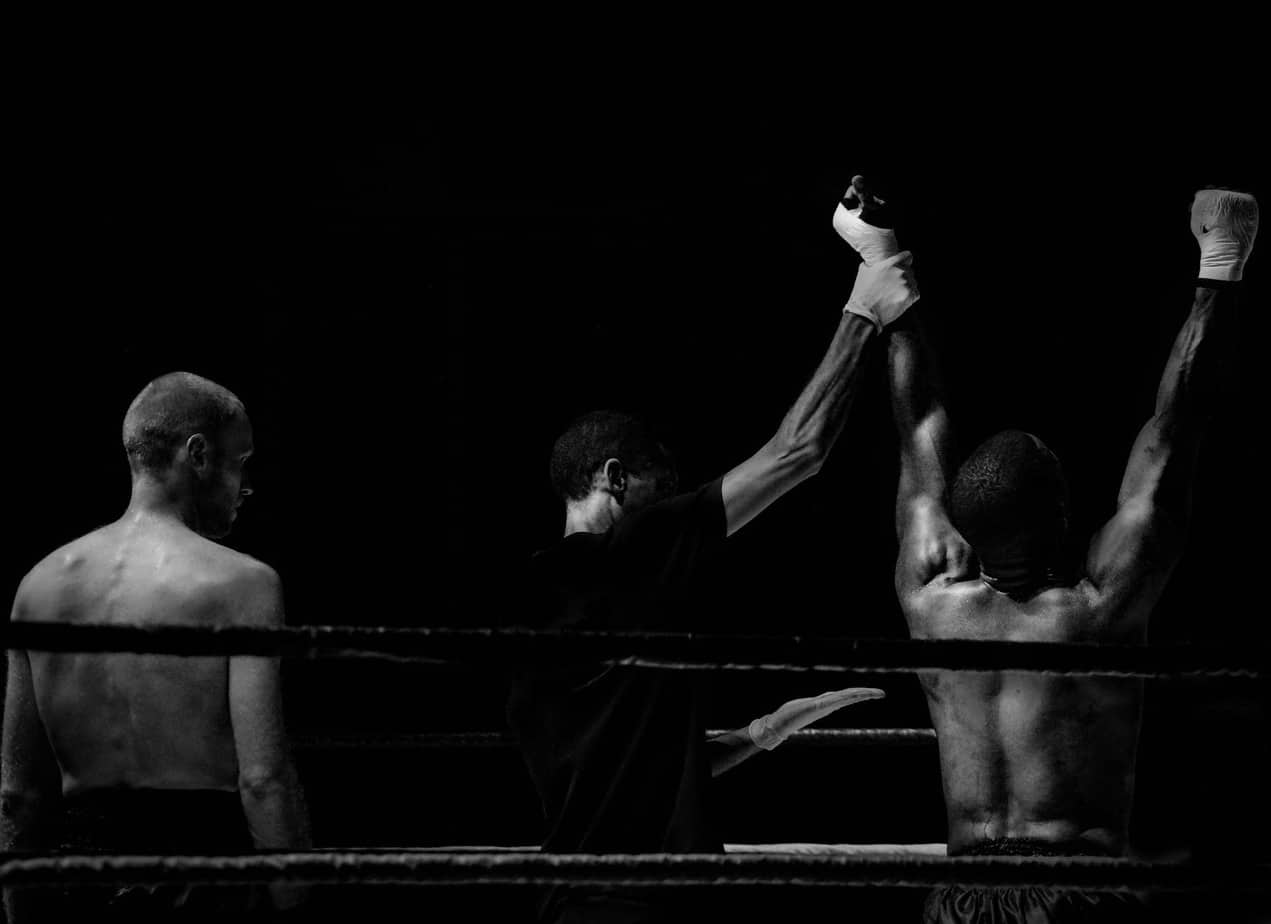
8
AugThe Sport With No Season
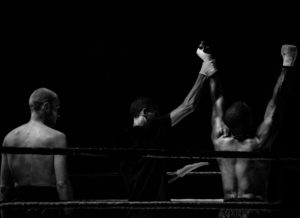
Photo by Skitterphoto from Pexels
I hesitate to admit it, having lived in the Boston area for my entire life, but I don’t follow the Red Sox. Or the Celtics. Or Bruins. Not even the Patriots. Don’t hate me! I’ve never been much of a jock, and don’t understand the finer points of team sports, but the main reason I neglect these undisputed best teams on the planet involves my commitment to super-fandom of another athletic endeavor – one that consumes so much spectator time and energy that it leaves little opportunity for interest in any other. “My” sport is called mixed martial arts, and it has no season.
On any given Saturday you’ll find me online making my picks, scouring mixed martial arts (MMA) websites, and solidifying my predictions for the evening’s bouts. I will text with a small group of super-fan friends, then sit down around 6:00 pm for the “early prelims,” the fights most people don’t bother watching. Then come the prelims, and around 10:00 pm the main event, and ring announcer Bruce Buffer (half-brother of Michael Buffer, of “let’s get ready to rumble” fame), bellowing “It’s time!” Depending on the outcomes, I skip or sulk off to bed, only to wake up on Sunday morning to watch the post-fight press conference and review the MMA journalists’ assessments.
As the name implies, mixed martial arts combines a spectrum of combat sports. During three five-minute rounds (five for championships), fighters employ any combination of boxing, wrestling, jiu jitsu, kickboxing, karate, or similar techniques to attempt to submit or knock out their opponent. If neither wins via KO, TKO, or a submission such as a choke-hold or arm-bar, the verdict goes to the hands of judges who employ a point system to determine a winner. The action happens within a chain-link, usually round or octagonal “cage,” hence the MMA synonym, “cage fighting.”
Fighters bleed. Sometimes they break bones. This does not appeal to everyone. Although the late Senator John McCain once referred to MMA as “human cockfighting,” his point of view eventually softened, as promotions and state athletic commissions took measures to regulate the sport and assure fighters’ safety. Still, people often seem shocked to discover that this card-carrying, bun-wearing, bookworm librarian loves watching so-called blood sport.
I passionately defend my interest, informing anyone who will listen that MMA is less dangerous than boxing or football. Mixed martial artists wear smaller gloves than do boxers, which may cause nosebleeds or cuts to the thin skin on the face or scalp. Although not great for optics, these superficial injuries pale in comparison to the invisible brain damage inflicted on boxers and football players, whose brains get jostled during head strikes and tackles. The landmark book Concussion by Jeanne Marie Laskas and the movie that followed elaborate on CTE. Muhammad Ali’s biography by Jonathan Eig delves into the disease as well. Fortunately Rose Gracie of the legendary founding family of MMA recently teamed with Boston University’s CTE Center to launch the Gracie Concussion Challenge, which “calls on fighters to take control of their brain health by participating in research and getting educated on concussions and chronic traumatic encephalopathy (CTE).” Regardless of my lectures, some folks just don’t like seeing blood, or humans punching each other. I get it. I love the stylistic matchups, the combination of athleticism and grit, and the simplicity of one-on-one competition.
A less predictable reason for my obsession, however: feminism. Women have competed in MMA for ages, but the largest U.S. promotions, the Ultimate Fighting Championship (UFC) and Bellator now include female competitors. Women fight in the same events as men, hold spots in the main and headline events, and share the spotlight with male counterparts. In the heat of the action an announcer may compare a man’s movement or tactic to a particular woman’s strategy. Live commentators routinely chime in with details about who trains with whom, and the information is not gender-segregated. Perennial discussions of FOTN (fight of the night), GOAT (greatest of all time), and best pound-for-pound include names of both ladies and gentlemen of the game. Imagine the announcers during NBA games routinely comparing up-and-comers to Tamika Catchings, who should be just as much of a household name as Hakeem Olajuwon based on her WNBA and Olympic record!
As I see it, nothing illustrates “the thrill of victory and the agony of defeat” better than MMA. Combatants train for months, culminating in a mere fifteen minutes of action, which entails being locked in a cage with someone just as eager to prove him or herself through punching, kicking and grappling. Only one gets their hand raised in victory. The emotional rollercoaster often mimics struggles outside of the cage. Many martial artists credit the sport for saving their lives, and elaborate in their biographies. Ronda Rousey’s My Fight, Your Fight, Chris Leben’s The Crippler, and Paige Van Zant’s Rise tell their stories. Doug Merlino gives an overview of the topic and profiles several fighters in Beast. A few documentaries lend insight into fight life including Anderson Silva: Like Water, and Fightville.
For lighter fare, read Bruce Buffer’s It’s Time!, which starts out with, “You don’t know who you really are until you’ve been punched in the face,” or check out the comedy DVD Here Comes the Boom. Of course the best and most obsessive way to learn about MMA demands dedication to viewing 39 UFC events per year (the total in 2018), exclusive programming and reality TV shows such as Dana White’s Tuesday Night Contender Series, a selection of Bellator, Invicta, ONE Championship, and other promotions’ events, and supporting local teams by attending their live shows. You see, I do support Boston and New England teams after all! Drives to Plymouth, Connecticut and Rhode Island allow me to cheer on competitors coached by local legends Joe Lauzon, Kru Mark DelaGrotte, and Marcus Davis.
While I may strike some as an unlikely fight fanatic, MMA appeals to all sorts of people. Curious after hearing my incessant fight talk, my 80 year old mother, a retired schoolteacher, started joining in watching the UFC at my house occasionally, and once stayed out until 1:00 am at a live CES event at Twin River Casino. Anyone can get hooked, so if you haven’t given MMA a chance, perhaps “it’s time!”
Lydia Sampson is the Assistant Director at the Morrill Memorial Library in Norwood, MA. Look for her article in the August 8, 2019 issue of the Transcript and Bulletin.

2
AugA Ruddy Good Writer
 “If you can keep your head when all about you / Are losing theirs and blaming it on you…”
“If you can keep your head when all about you / Are losing theirs and blaming it on you…”
I’m familiar with these words, but I never realized they were written by Rudyard Kipling. “If–” is consistently voted the most popular poem in Britain, and all too frequently quoted, according to its author. Despite being woefully unfamiliar with his other works, I was thrilled to be invited to spend a weekend at Naulakha, the Kiplings’ home in Dummerston, Vermont during their four years in America.
Whenever they travel, my second cousin Mark and his wife Liz, who live outside London, try to stay at one of the many properties run by The Landmark Trust in the U.K. Restored manor houses, castles, forts, and cottages, they exude history and charm. The Landmark Trust USA offers a small group of historic homes for vacation rentals as well, including Kipling’s former shingle-style home outside Brattleboro. 90 feet long but only 22 feet wide, it was designed to resemble a ship riding the hillside like a wave, with vistas of the Connecticut River Valley and a glimpse of Mt. Monadnock. It’s a stunner, alright. When Mark, who studied and taught at Oxford, started planning a trip to the States two years ago, he lost no time nailing down a stay at Naulakha.
Determined to know something about old Rudyard before I slept under his roof, I checked out The Jungle Book. I found all the anthropomorphizing a little daunting so I stuck to the preface. Thanks to that, and recent articles in the Globe and the New York Times about the new Kipling biography, I can reel off a few fun facts about Francis Rudyard (Ruddy) Kipling.
Did you know…
His parents fell in love in Staffordshire, England at a picnic on Lake Rudyard.
At age 41, he was the first English-language writer, and youngest-ever winner, of the Nobel Prize in Literature.
Sir Arthur Conan Doyle gave him a pair of downhill skis, believed to be the first in Vermont.
He allegedly coined more phrases in the English language than any source besides Shakespeare and the Bible. In addition to “white man’s burden,” he gave us “bite the bullet,” “never the twain shall meet,” “slack-jawed,” and “Svengali.” Who knew?
Kipling was a complex man of startling contradictions. He has been variously called a colonialist, an imperialist, and a racist, as well as one of the greatest and most versatile writers of all time. He was also no slouch when it came to socializing, counting among his friends Henry James, Mark Twain, Frank Doubleday, and Teddy Roosevelt.
So how did this Bombay-born Brit come to call Vermont home from 1893-1896? At age 23, he fell in love with and married American Carolyn “Carrie” Balestier. On 10 acres of land near Brattleboro, where Carrie’s family had settled generations earlier, he built his dream house, which he named Naulakha.
By all accounts, the Kiplings thrived in New England. There Rudyard wrote Captains Courageous and The Jungle Book, earning him world-wide recognition, and began work on Kim. He also started telling what came to be known as the “Just So Stories” to their two young daughters. Their idyllic life in New England, however, came to an abrupt end when Kipling and his alcoholic brother-in-law had an epic falling out that culminated in a messy court battle. With public opinion strongly against him, he packed up his family and returned to England, leaving behind most of his possessions. He might be pleased to know they remain in good hands.
Naulakha, if you’re wondering, is a Hindi word meaning “jewel without price.” That’s not entirely true today, as the opportunity to sleep in Kipling’s bed and bathe in his claw-footed tub is hardly free. But how often can one relax in a famous author’s book-lined study and sit at the very desk from which literary classics were penned? Paying guests can also play a set of tennis, go sledding, or simply stroll among the lovely grounds, just as the Kiplings did. Or even grill burgers and dogs on the outdoor barbecue, which I’m fairly certain the Kiplings did not do.
Breakfasting at the original table in the spacious updated kitchen, along with my husband, sister, brother-in-law, and British kin, I read aloud the top 10 things to do in Brattleboro from the Moon travel guide to Vermont. We chuckled over the prospect of visiting a clothing-optional venue but opted instead for a hike to the former ice pond at Retreat Farm, followed by a stop at the Grafton Village Cheese Shop. I think we made the right call.
The latter, simply put, is a cheese-lover’s paradise. And who among us lactose-tolerant types doesn’t love unlimited free samples of fromage? Toothpicks for spearing cubes of cheddar, flavored with chili, truffle, garlic, and sage, were flying fast and furious, mostly by me. And then there was the award-winning Shepsog, the Algonquin word for sheep, as we all know. But it wasn’t all curds and whey. To cleanse the palate between cheese courses, one could also try savory spreads such as Triple Ale Onion on tiny crackers, and… well, you get the gist. The only disappointment was the chocolate bar, bursting with mouth-watering peppermint patties, dark chocolate-covered pretzels, and salted caramels; I couldn’t help but notice the distinct absence of toothpicks, tongs, or any other items to facilitate free tastings, within reach.
If following in the actual footsteps of one of the most prolific and popular writers of the 20th century is on your bucket list, or just shooting pool on his table, the charms of Naulakha await. For a less intimate but more immediate experience, check out the newly published If: the Untold Story of Kipling’s American Years, by Christopher Benfey, the Andrew W. Mellon Professor of English at Mount Holyoke. Howard Rice’s Rudyard Kipling in New England can also be found on the shelves at the Norwood Library, as well as The Strange Ride of Rudyard Kipling: His Life and Works, by Angus Wilson. To read his own words, Kim— required reading for all CIA operatives in Vietnam—is available through our streaming service, hoopla.
Younger readers might prefer Rikki-Tikki-Tavi, a short story in the 1894 anthology The Jungle Book about the adventures of a young Indian mongoose. To enjoy Kipling without committing hours of time, I recommend the delightful, and delightfully short, Just So Stories. How the Elephant Got His Trunk and How the Camel Got His Hump are two of my favorites.
Whether you venture as far as Vermont or as close as your local library, Rudyard Kipling offers treasures for readers of all ages. “Just So” you know.
April Cushing is the Adult and Information Services Librarian at the Morrill Memorial Library in Norwood, MA. Look for her article in the August 1, 2019 issue of the Transcript & Bulletin.

25
JulYour Family Tree
 I grew up with an awkward middle name: Lincoln. It wasn’t exactly the pinnacle of cool and hip. As a young child in the ‘70s when most of my friends had middle names like Ann, Marie and Jean, I was well-aware that Lincoln was not a name to be shared out loud if I could help it. The only folks who knew this secret information were the local bank teller and the pediatrician.
I grew up with an awkward middle name: Lincoln. It wasn’t exactly the pinnacle of cool and hip. As a young child in the ‘70s when most of my friends had middle names like Ann, Marie and Jean, I was well-aware that Lincoln was not a name to be shared out loud if I could help it. The only folks who knew this secret information were the local bank teller and the pediatrician.
As is often the case with family history, details began to emerge as I matured. Soon I realized that my dad had the same middle name, as did his father. By fifth grade, when we began to explore our heritage in school, I started asking more questions and gradually the family lore was revealed. Lincoln had been a last name, and the family had wanted to carry that name on – thus the awkward middle name. Why? “Well, you’re related to Abraham Lincoln, of course.” Hold on! What?? That was a game changer. More comments were being tossed around: “Somehow you’re related through the Tupper line.” “Yes, there was an Eaton. I think a Harriet, from Hingham, MA?” “And there is that Mayflower connection, you know.”
Turns out, I didn’t know. Not at that age, but I was beginning to take note. My father didn’t put a lot of clout in genealogy or family lineage. “Be the best you can be, and serve others” was his unspoken motto. For the most part, I agreed. When I was in my twenties, I would not have placed the subject of genealogy high of my list of interests. After I married, I changed my name, replacing Lincoln with my given surname. That horrid middle name was behind me. Still, my husband was curious. Could those stories really be true?
It wasn’t until I had two Eurasian daughters that it seemed important for them to know about their Chinese and American heritage. When they told fellow students at school that they were related to the 16th President of the United States, they were confronted with disbelief. How could someone who looked like them be related? “Well, Lincoln had dark hair too,” I told them. But where were the facts?
I began to gather a few family archives from around my parents’ house: the two volume set of the Tupper Family History, a half-hearted family tree, a list my mother had started connecting me back to General Israel Putnam. I tried to Google the Lincoln family tree. Still, I couldn’t quite make the connection back. While I was collecting pieces that would eventually fold together into the family quilt, I had lots of gaps and unravelings.
It wasn’t until I took a spontaneous trip to the Family History Library in Salt Lake City that the dots started to connect. A volunteer helped me set up an account on the online database called Family Search. Patiently she walked me through, inputting my parents’ information, then my grandparents’. Each piece was verified with the vital records. It took about an hour, but when I walked downstairs, I was given an iPad which connected to a wall display. Lo and behold, up popped the famous people in my lineage… and there was President Abraham Lincoln!
When I returned home, however, I wanted to fill in the tree even more. Good thing there wasn’t any shortage of resources at my fingertips. Not only can you have access to various databases through your library card (search under “Books and More” on the norwoodlibrary.org website for “Databases”), including Ancestry Library. This is the “In Library Use Only” version. Some of the Norwood newspapers are now digitized and available online as well, so one can research family stories in the news.
We also have a genealogical expert, Joe Petrie, who will be offering several one-on-one sessions in the fall for those who would like to learn how to do more in-depth online research. These sessions will be two hours long on select Mondays, Wednesdays and Fridays in September, October, and November. Be sure to contact our Reference Desk (781-769-0200 x110) to reserve a spot. They are offered at no charge. What an amazing opportunity!
For online research assistance, you can also check out Genealogy Online by Elizabeth Powell Crowe. Here you will “discover how to start your search, find specific types of genealogical information on the Web, and use online tools effectively and efficiently.”
Other helpful resources are in print, too. I found one book so easy to use. The whole topic can be a bit overwhelming, but Genealogy for the First Time by Laura Best made it approachable. Best begins with the chapter “Where do I Start?” and she holds the reader’s hand throughout. In her opening words she says, “Genealogy is, metaphorically speaking, one large puzzle. You may pick up the pieces in any order to place them. However, some pieces will be more difficult to place than others and may need to be set aside until other pieces are fitted together to give better reference and framework.”
As you become more engrossed in your research, your questions will become more difficult. Like, did your great-grandfather really come over on the Rotterdam steamer into Ellis Island in 1896? And was his name originally Bremmer before officials changed it to Brimner upon his arrival? They Came in Ships by John P. Colletta, Ph.D. guides you through your ancestors’ arrival records. There are resources that aide with those picky problems too. For example, there is a series of books for a variety of ancestries. A Genealogist’s Guide to Discovering Your Scottish Ancestors by Linda Jonas and Paul Milner is one of many, also available for English, Italian, and German ancestors.
Likewise, if you have deep roots in New England, the Genealogist’s Handbook for New England Research by the New England Historic Genealogical Society might be your cup of tea. And if you’re feeling like you’re hitting a brick wall, The Family Tree Problem Solver by Marsha Hoffman Rising could offer a ladder up and over those problems.
If you’re already an expert in genealogy, the book Your Guide to Cemetery Research by Sharon DeBartolo Carmack would not be a surprise to you. That said, I was amazed at the research that people do right at the gravesite. Carmack provides guidance for everything from Records of Death and how to read them, to searching the cemetery for clues and rubbings.
Of course now that people are rushing to get a 23andMe personalized report, there are family stories emerging that were hidden for years. Sometimes they can be very revealing. A popular memoir by Dani Shapiro called Inheritance: A Memoir of Genealogy, Paternity, and Love addresses this very topic. When Shapiro was doing her own genealogical research, she submitted her DNA for analysis on a whim, only to discover that her “beloved deceased father” was not her biological one. Shapiro addresses those secrets within families and what it means to unlock them.
That day in Salt Lake City I was so grateful to have some of the pieces of my family puzzle come together, but that didn’t mean the whole puzzle was complete. Only part of it. If I choose, I can head down more rabbit holes with the family tree. If you decide to do the same, I hope some of these resources hold the key.
Nancy Ling is the Outreach Coordinator at the Morrill Memorial Library in Norwood, MA. Look for her article in the July 25, 2019 issue of the Transcript and Bulletin.
